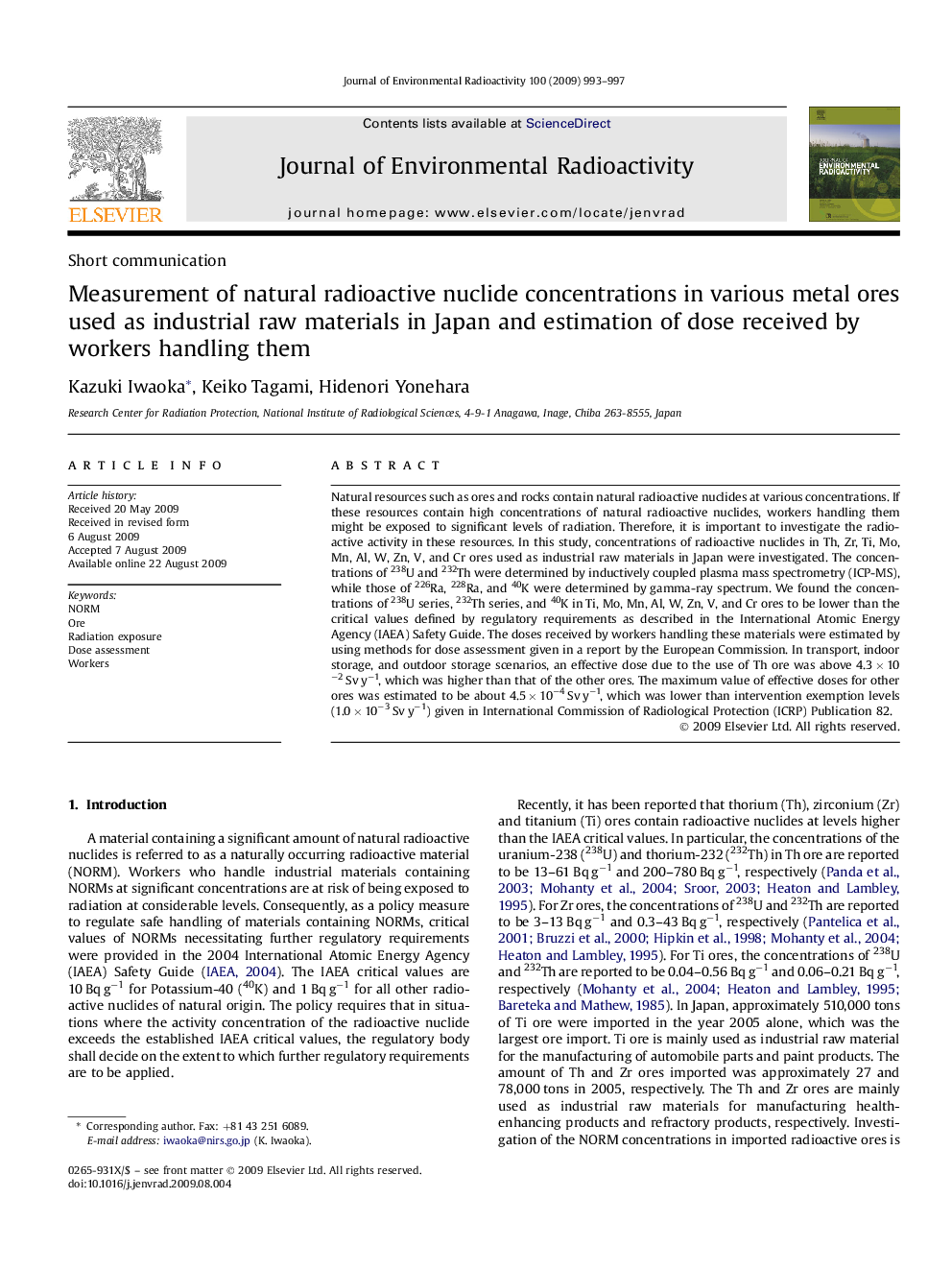| Article ID | Journal | Published Year | Pages | File Type |
|---|---|---|---|---|
| 1738923 | Journal of Environmental Radioactivity | 2009 | 5 Pages |
Abstract
Natural resources such as ores and rocks contain natural radioactive nuclides at various concentrations. If these resources contain high concentrations of natural radioactive nuclides, workers handling them might be exposed to significant levels of radiation. Therefore, it is important to investigate the radioactive activity in these resources. In this study, concentrations of radioactive nuclides in Th, Zr, Ti, Mo, Mn, Al, W, Zn, V, and Cr ores used as industrial raw materials in Japan were investigated. The concentrations of 238U and 232Th were determined by inductively coupled plasma mass spectrometry (ICP-MS), while those of 226Ra, 228Ra, and 40K were determined by gamma-ray spectrum. We found the concentrations of 238U series, 232Th series, and 40K in Ti, Mo, Mn, Al, W, Zn, V, and Cr ores to be lower than the critical values defined by regulatory requirements as described in the International Atomic Energy Agency (IAEA) Safety Guide. The doses received by workers handling these materials were estimated by using methods for dose assessment given in a report by the European Commission. In transport, indoor storage, and outdoor storage scenarios, an effective dose due to the use of Th ore was above 4.3 Ã 10â2 Sv yâ1, which was higher than that of the other ores. The maximum value of effective doses for other ores was estimated to be about 4.5 Ã 10â4 Sv yâ1, which was lower than intervention exemption levels (1.0 Ã 10â3 Sv yâ1) given in International Commission of Radiological Protection (ICRP) Publication 82.
Related Topics
Physical Sciences and Engineering
Energy
Nuclear Energy and Engineering
Authors
Kazuki Iwaoka, Keiko Tagami, Hidenori Yonehara,
